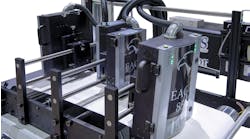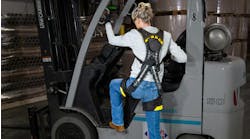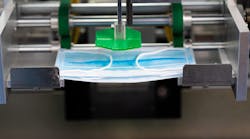In July 2020, the Institute for Supply Management (ISM) reported that U.S. manufacturing activity accelerated to its highest level in nearly one and a half years. Subsequently, factory jobs slumped as a result of the pandemic which left manufacturers struggling to take on more work while balancing a lack of resources. At the onset of the pandemic, some manufacturers were forced to shut down plants or furlough non-essential personnel while others had to completely pivot their operations. As a result, the manufacturing industry has drastically changed, and manufacturers have had to adapt.
To gain an understanding of how small and medium-sized businesses (SMBs) have responded to this change, ECI Software Solutions surveyed 100 SMB IT decision-makers in the manufacturing industry. Whether it’s to fuel growth or respond to global change, the survey found that most manufacturers are investing in technology with 81% of respondents stating that their business increased overall investments in technology over the last 12 months. The survey results clearly showed that new circumstances had hastened digital transformations and previous technology investments had benefited their business’ operations.
As we look back on the industry over the past few months, there are some lessons to be learned regarding how these manufacturers overcame various challenges and how technology helped them in that process. Here are some examples:
Lack of Supplies
When COVID-19 first hit the U.S., many manufacturers struggled to reconfigure supply chains as shipping delays and production shutdowns were experienced around the globe. The pandemic struck a huge blow to a manufacturing industry that had already been dealing with rocky trade policies. Thirty percent of respondents from the ECI survey stated that they increased investment in technology infrastructure as a response to global trade policies. In fact, Colleen Weber, business manager at Excel Connection, a custom manufacturer for products for electrical distribution systems, said “the biggest threat to us has been COVID-19 and the current administration adding tariffs to China. The customers that outsourced to Mexico were coming back to us, hoping we could help them, because they couldn’t get the shipments in a timely manner.” As a result, the pandemic has forced many manufacturers to reevaluate their suppliers and, in some cases, find completely new suppliers altogether, to keep production on track.
As manufacturing operations are frequently pushed to reimagine product lines and business models—while customer demands continue to increase—supply chains are constantly evolving, and traditional supply chain operations may no longer cut it. Businesses need to be able to adapt to changes in their supply chain seamlessly or risk a total disruption of operations. Many have turned to Enterprise Resource Planning (ERP) solutions to help organize their increasingly complex and data-centric operations, making it easier to adapt to change.
SMBs that have used ERP solutions to respond to global changes have seen great results. According to the same survey, 78% say their ERP is “very effective” or “effective” in helping them manage the impact(s) of global trade policies–like a fluctuation of material prices.
Increase in Demand
As the pandemic response deepened and lockdowns were put into effect around the world, it prompted a different challenge for manufacturers: a major increase in demand. Consumers were excessively stocking up on essentials, unsure of what was to come or how long the lockdowns would be in place for. Panic buying left shelves bare and manufacturers simply couldn’t keep up with the sudden increased level of demand. Immediately manufacturers had to modify supply chains to keep up with the rate that products were being sold. For consumers, it took some time to reap the benefits of production increases, but for manufacturers, these adjustments had to happen overnight.
“As an essential business, we were called on to manufacture parts for our railroad, water treatment, hospital and utility customers to keep them going during the pandemic,” said Weber. With a decrease in workforce and an increase in demand, some manufacturers struggled to find a balance. Shops that were already leveraging technology were able to quickly adjust with the ability to oversee operations and implement automated processes to cut down on error and save valuable time. Sixty-seven percent of those businesses that have incorporated technology say their core business processes are automated, with 48% having used software to automate half or more of their business. As a result, they are able to spend less time doing menial tasks and more time focusing on what is most important.
Pivoting of Operations
As consumer purchasing behavior changed and restrictions evolved, some manufacturers had to reimagine their supply chains altogether. Those that manufactured what were now deemed non-essential items were faced with a few questions: what can we do to keep the lights on and operations underway, and how can we help? As a result, some manufactures completely pivoted and reconfigured their supply chains to produce PPE and other essential items that were in high demand.
Takumi Precision, an aerospace and molding manufacturer, faced huge threats to its operations at the onset of the pandemic with the lack of people flying and reduction of elective surgeries. The company saw little hope for the future of its business as the industries they serve were flipped upside down. However, when it was approached with the opportunity to pivot production and manufacture surgical masks, ventilators, and COVID-19 testing machines, Takumi was able to quickly make changes to its operations through its ERP system. With the ability to quickly pivot, the company expanded its customer base further into the medical field and is now considered a key manufacturer of PPE worldwide.
In addition to the changes in production, all manufacturers were also forced to run their businesses in an entirely different way that complied with CDC guidelines to keep employees safe and to prevent an outbreak in the workplace. This meant that some employees worked remotely and things like group meetings were put on hold. As a result, there was an increase in industry demand for ERP solutions that provided mobility to its users. Fortunately, the use of cloud-based technologies has offered visibility into operations from any location at any time, whether employees are on-site or not. For the 74% of manufacturers that have at least part of their ERP solution in the cloud, they have been able to keep production on track and communication still possible.
There has been a herculean effort by manufacturers to produce and provide everything needed to keep consumers safe and prepared for whatever the next phase of the pandemic brings. Though we don’t know exactly what that will look like, one thing is certain: businesses need to find ways to adapt to unanticipated changes because each day brings new surprises. Adopting reliable and secure technology that is designed for today and scalable for tomorrow is key to successfully navigating this new business landscape.










